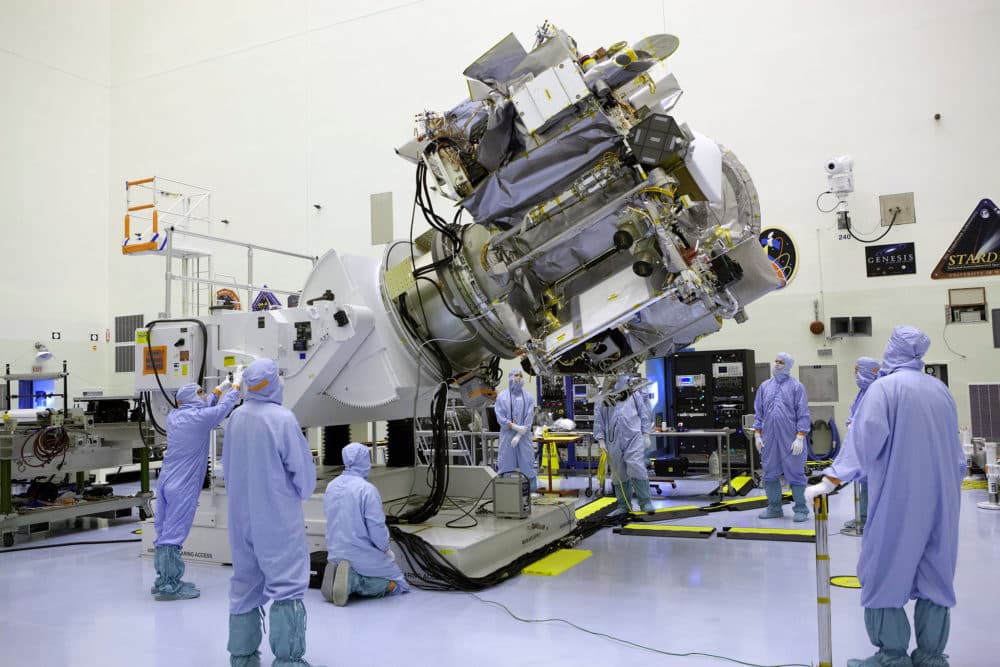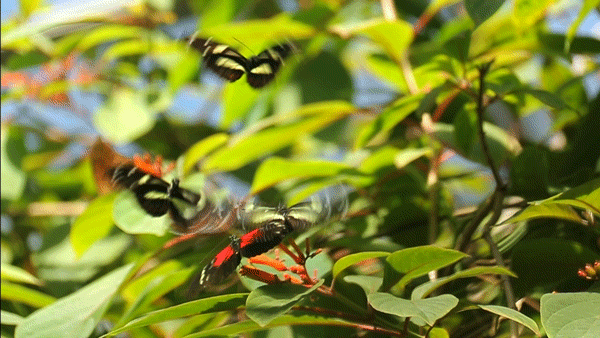
Together with United Launch Alliance and a host of national and international collaborators, NASA will send the spacecraft OSIRIS-REx into space Thursday evening. Over the next seven years, OSIRIS-REx will visit the asteroid Bennu, map the surface and bring back samples of the regolith — or rocky surface — for study on earth.
In advance of the launch, NASA has been streaming a series of panels throughout the day. We tuned in for the Uncovering the Secrets of Asteroids discussion with NASA's Ellen Stofan, Michelle Thaller and Lindley Johnson and Goddard's Alex Young.
Perhaps more interesting than the discussion was the Q&A to follow — it was informative, funny and nerdy.
Here are a few of the highlights from the panel and Q&A:
Why are we conducting the OSIRIS-REx mission?
Earth is a rocky planet in a comparatively hot belt of the solar system—so a majority of the water and some of the organic components of life, including RNA, DNA and amino acids, on Earth is thought to have come from a collision with an asteroid many years ago. Asteroid sampling could help us make new discoveries and answer old questions, such as where we came from and whether there is other life in the universe, NASA’s deputy director of science communications Michelle Thaller explained during the panel.
Why are we visiting Bennu?
Bennu is a large asteroid that approaches Earth about every six years, so it is comparatively easy to access. And as NASA is already well-versed in landing on large objects, like planets, maneuvering on a very small body will help us learn for future endeavors, NASA chief scientist Ellen Stofan said.
The carbon-rich materials gathered on Bennu will benefit research for years to come. For now, the plan is to conduct research on 25 percent of the material and save the remaining material for the future when technology is better and resources greater. The panelists emphasized that the sample be pristine and untouched by earth contaminants.
Is Bennu a threat to the Earth?
Bennu was first discovered in 1999 and has been identified as “potentially hazardous.” But in layman’s terms, all this really means that it is greater than 150 meters in diameter (1,614 feet to be exact), and in close proximity to earth. And while there is a very slim chance that Bennu will collide with earth, if it does, it won’t be for another 160 or more years, according to Lindley Johnson, the Planetary Defense Coordination Office director.
Are there safeguards in place for protecting Earth in the case Bennu or some other asteroid comes too close?
Johnson said over 100 tons of harmless material falls to Earth every day — mostly dust from space. As for orbiting objects, NASA keeps track, but they simply pass on by our planet.
But yes, there are actually a few contingency plans for diverting hazardous asteroids (and avoiding subsequent asteroid-related mass earth destruction). They are called the Asteroid Impact and Deflection Assessment (AIDA) mission and the Asteroid Redirect Mission — and they are about as complicated as they sound. If you are curious, here is some light reading about how NASA plans to avoid "Armageddon" or the other one.
Once OSIRIS-REx launches, how can we keep track of it?
NASA’s Eyes is a cool tool that updates in real time to show where all of NASA’s technology is and just what it is doing. Eyes on the Solar System shows where all of the solar system resources are or have been from 1950 through 2050, based on projections. Eyes on Earth does the same for satellites. With Eyes on the Exoplanets, you can download a full atlas of the sky since, well, we don’t have any spacecraft near the exoplanets at the moment.
Will Bennu’s samples release an Andromeda Strain on the earth?
First off, NASA has already determined that the asteroid contains no life. And NASA says its samples are meticulously cared for, even down to where it will be contained at Johnson’s Space Center Astro Curation society. So, no, we won’t all die from a space virus. It's far more likely that the sample could get contaminated by Earth’s radiation.
Multimedia business & healthcare reporter Chloe Aiello can be reached via email at [email protected] or twitter.com/chlobo_ilo.
Subscribe to Denverite’s newsletter here.












